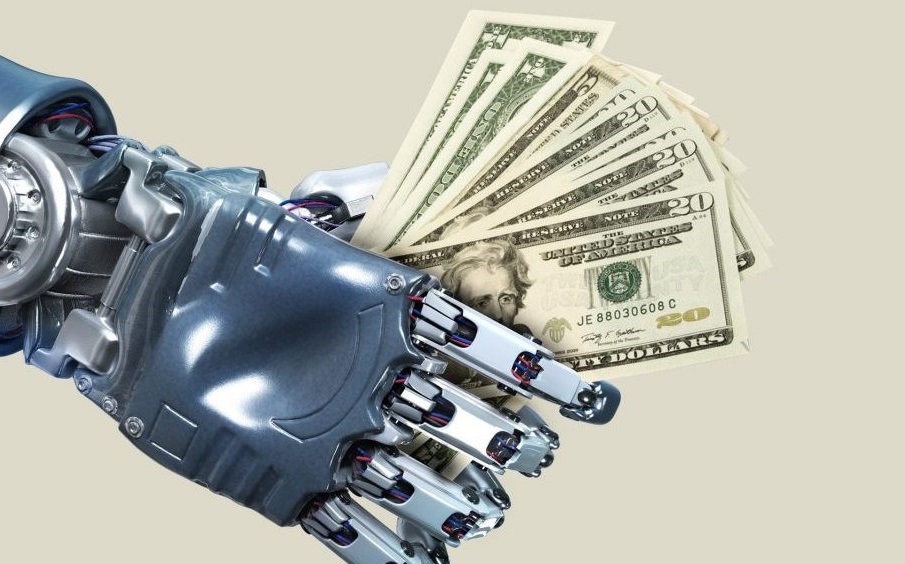How will AI boom impact the US dollar?
In many analysts’ opinions, if artificial intelligence (AI) is the gift that keeps on giving for US productivity it won’t be the gift that keeps on giving for the US dollar

AI keeps on giving for US productivity, but it makes it hard to strengthen the US dollar
All else equal, countries at the forefront of productivity-enhancing innovation are likely to see their currencies rise. This may have been a key factor driving the US dollar in recent years but, as with most things in life, timing is everything. For many analysts, there’s evidence that equities tend to boom as excitement builds about productivity-enhancing technology, which sucks in foreign capital and appreciates the exchange rate.
But if, as often happens, boom turns to bust, the capital departs and the currency falls – before the productivity-enhancing effects of the new technology really show up in the data. This happened during the dot.com boom of the 1990s and may be repeated as AI-related excitement builds. If that’s the case the US dollar might have had its ‘AI boom’ and the outlook is for future weakness, even if AI technology produces the productivity benefits that many expect.
Theory and evidence seems to suggest that improvements in productivity, relative to other countries, lead to appreciation of the real exchange rate. If we look at the US dollar, for instance, the US has been out in front of its peers for some years now and, though much of this period the US dollar has risen. We do not have a fundamental disagreement about this point. But where we do have doubts is around the sequencing of these gains.
For many analysts’ view, excitement about seemingly major breakthroughs in productivity-enhancing technology leads to a boom – and bust – in associated stocks, with the currency following the ups and downs of stocks rather than the actual improvement in productivity, which comes later. In fact, this could mean that the currency falls right at the point the productivity-enhancing technology starts to work its magic on the economy.
This is what we saw during the US’s dot.com boom of the 1990s and could be about to be repeated with AI. As a reminder, the dot.com boom of the 1990s reflected surging optimism about internet based startups and saw the tech-heavy Nasdaq rise by almost four-fold in the two years before the bubble burst in March 2000, and that after a substantial rise through the earlier part of the 1990’s as well. This period was also boom-time for the US dollar. In broad trade-weighted terms the US dollar rose by nearly two-thirds through the 1990s.
Steven Barrow, Head of Standard Bank G10 Strategy, said much of this rise would reflect ‘hot money’ chasing the gains in the tech-heavy Nasdaq. Did the dot.com boom deliver the promised productivity surge? The data tends to suggest that it did but, as with new technologies, it takes time for these productivity enhancements to come through. People have to learn the new technology and get comfortable with using it. It might even be the case that the early phase of the new technology is regressive in terms of growth and productivity. This is a criticism that some levy at AI given the voracious appetite the sector has for traditional power sources meaning that there might be over-investment by firms at the start which runs into growth-sapping bottlenecks.
However, whatever the reason for equity rallies to run far ahead of any productivity boom, the dot.com bubble suggests that the US dollar responds to the surge in equities – and the subsequent collapse - not the (later) improvement in productivity. We saw that in the 2000’s as that decade saw the US dollar follow the slump in stocks after the rise in the 1990s.
The key question now is whether AI is today’s dot.com boom. Namely, one that has seen the US dollar appreciate due to the phenomenal lift that the sector has given to US stocks relative to others and sucked in foreign capital, but one that is vulnerable to a bust such that even as the productivity-enhancing benefits lift the US economy, the US dollar will still fall as investors turn away from blown-out AI-related stocks. “That’s a tough question to answer as calling the end of booms is usually a graveyard for forecasters and investors. We can’t say if, or when, that will happen. But what we do believe is that even if AI is the gift that keeps on giving for US productivity it won’t be the gift that keeps on giving for the US dollar”, said Steven Barrow.








